Time-Lapse Movies 1: Things to Know About Time-Lapse Movies
In terms of expression, my intent with this piece was to capture the dynamic motion of clouds over the heights. I set the interval between shots to one second for a smoother effect. Because the clouds sometimes hid the sun, I set the exposure mode to aperture-priority auto and enabled exposure smoothing.
Filmed and narrated by YAMANO Yasuteru
Things to Know About Time-Lapse Movies
A time-lapse movies is created from a large number of photos taken at a set
interval. Not only can they make time appear to pass more quickly, but by choosing
long exposure times for each shot, you can use them to create footage in which dark
subjects, such as the night sky, are clearly visible. With a sufficiently high-resolution
camera, you can create time-lapse movies at resolutions of not just Full HD or 4K
UHD but even as high as 8K UHD.
The process of filming a time-lapse movie
consists of two stages: one in which interval-timer photography is used to create
the individual frames and another in which they are joined together to create a movie.
The camera time-lapse movie option combines interval timer photography
and movie creation in a single step, while the interval time shooting
option can be used to record the individual frames that will become the raw materials
for a time-lapse movie. The time-lapse movie option creates only
a movie file and is best reserved for casual experimentation, while interval-timer
shooting can be said to be targeted at advanced users, as it allows the individual
frames to be enhanced with minimal loss of detail (particularly if the photos are
in NEF/RAW format) and permits a variety of effects to be added during movie creation.
Because both involve the interval timer, skillful adjustment of interval-timer settings
is key.
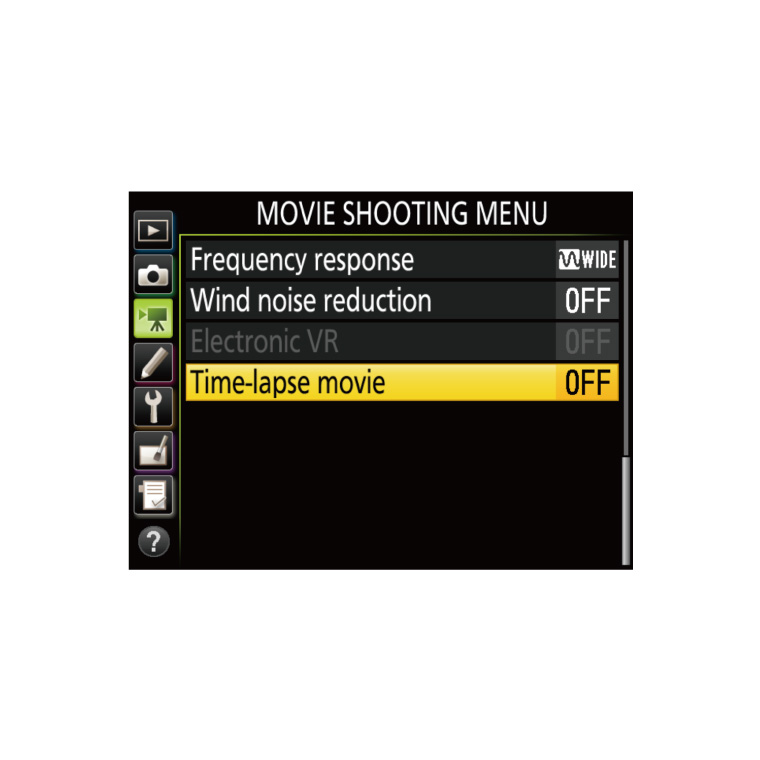
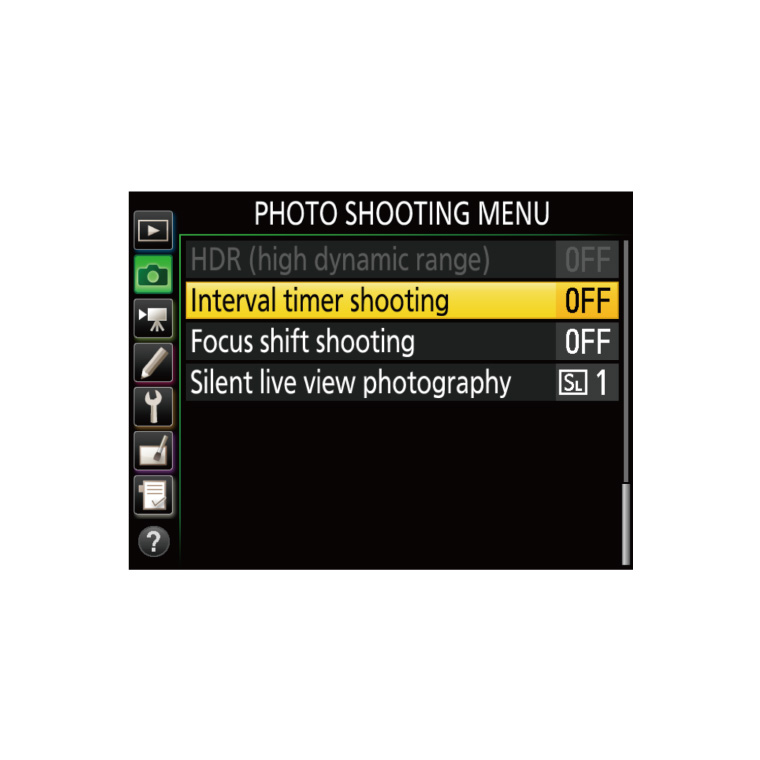
Time-Lapse Movies: Appropriate Subjects and
Recording Times
Time-lapse movies have captured cinematographers’
imaginations for a variety of reasons, the most important being as a means of realizing
the creative goals already mentioned: speeding the passage of time or capturing the
motion of celestial bodies in the night sky. In addition, time-lapse movies have attracted
attention for the fact that they can, owing to the high quality of each of the individual
photos (or in movie terms, frames) that go into making the movie, be used to create
high-definition, high-quality footage. More specifically, they fill the need for high-definition
4K or 8K movie content.
And at the risk of stating the obvious, the raw
material for time lapse movies can also be made to serve multiple needs: if the shooting
conditions and equipment for interval-timer photography are selected to maximize image
quality, the individual frames can themselves be made into photos of the highest quality,
allowing them used both as a part of a time-lapse movie created at a later date and
as photos of pivotal moments. This is one of the reasons interval-timer photography
is such a popular choice for phenomena such as total solar eclipses, where it can
capture the entire event from before the eclipse enters totality until after it leaves.
All of this makes it difficult to provide a systematic description of the
expectations surrounding time-lapse movies and interval-timer photography; instead,
speaking as someone captivated by the expressive power of time-lapse movies, I will
show stills from some of the time-lapse movies I have filmed to date.
The most important question to consider before filming a time-lapse movie is “how
long will I need to film this subject”.
First, based on the speed
at which your subject changes, choose an interval that will make
the motion appear smooth in the final movie. The number of shots
can similarly be estimated based on directorial considerations of “what frame
rate do I want and how long do I want the final movie to last”. To calculate
the number of frames needed to create enough footage for say, 30 seconds playback
at a frame rate of 30 fps (30 frames per second), you would multiply the length (30
seconds) by the frame rate (30 frames/second), yielding a total of 900 frames. It
is of course normal for photographers to take more shots than is strictly necessary,
as during the editing process they may find footage they don’t need or sections
they want to play slower. The total recording time can be calculated by multiplying
the interval by the number of frames required based on these considerations.
As an example, say you want to show clouds flowing gently past, with an interval
of 1 second between shots: to create 60 seconds of footage at a frame rate of 30 fps,
you would need a minimum of 60 by 30, or 1,800, frames, although in practice you would
shoot more, say 2,000 frames. To shoot 2,000 frames at an interval of 1 second would
take 2,000 seconds, for a total of 33 minutes 20 seconds shooting time from beginning
to end.
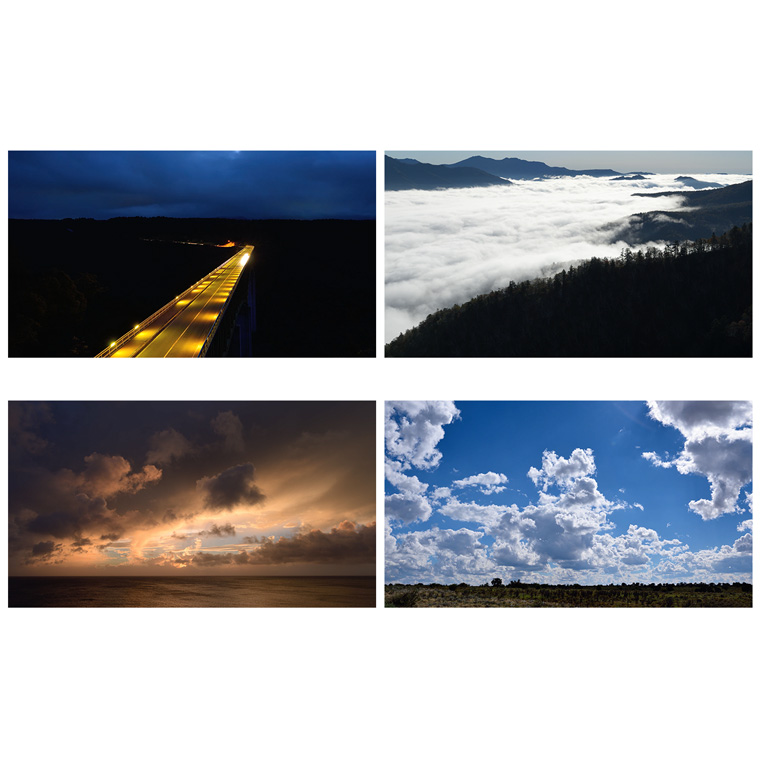
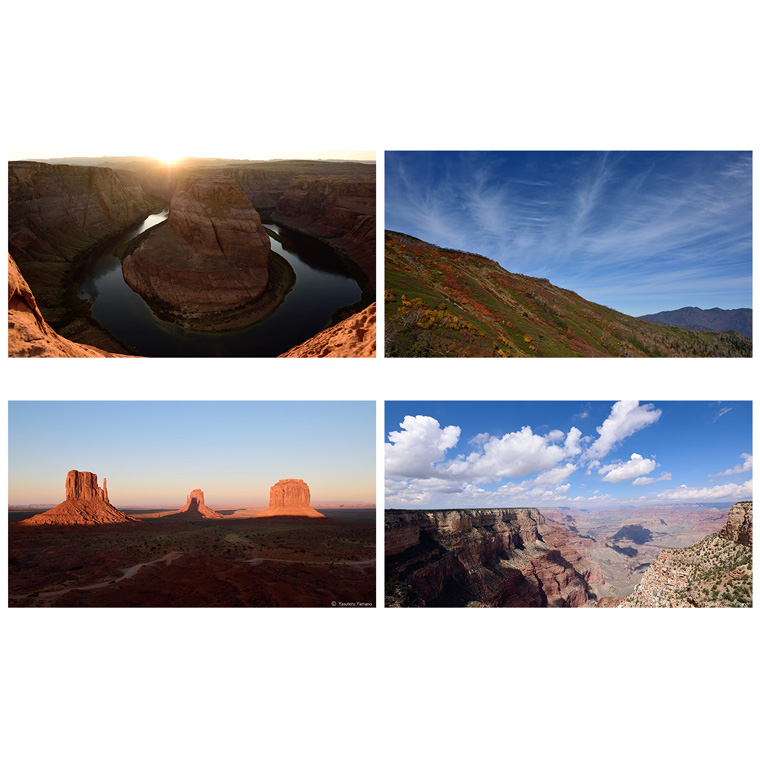
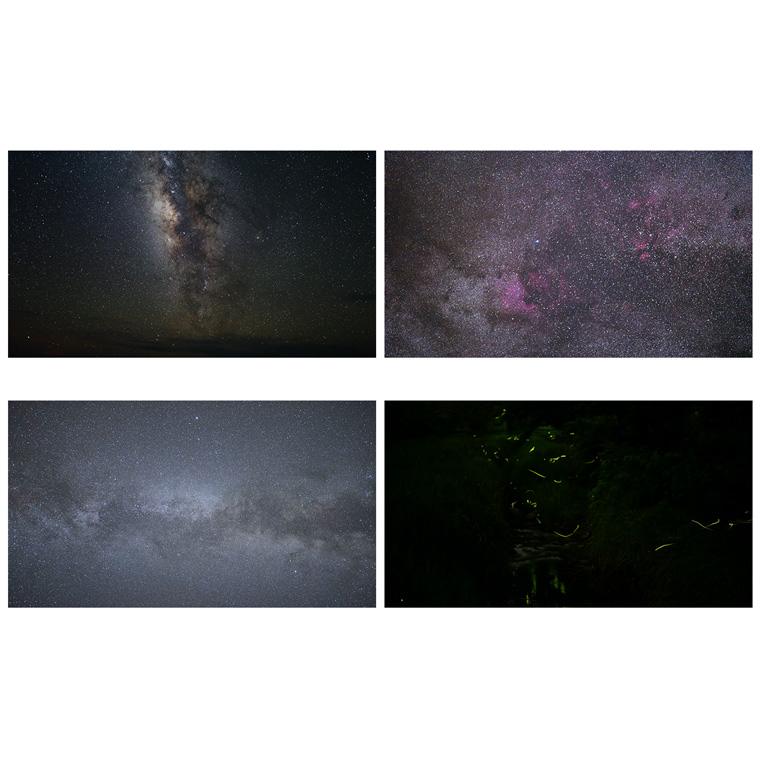
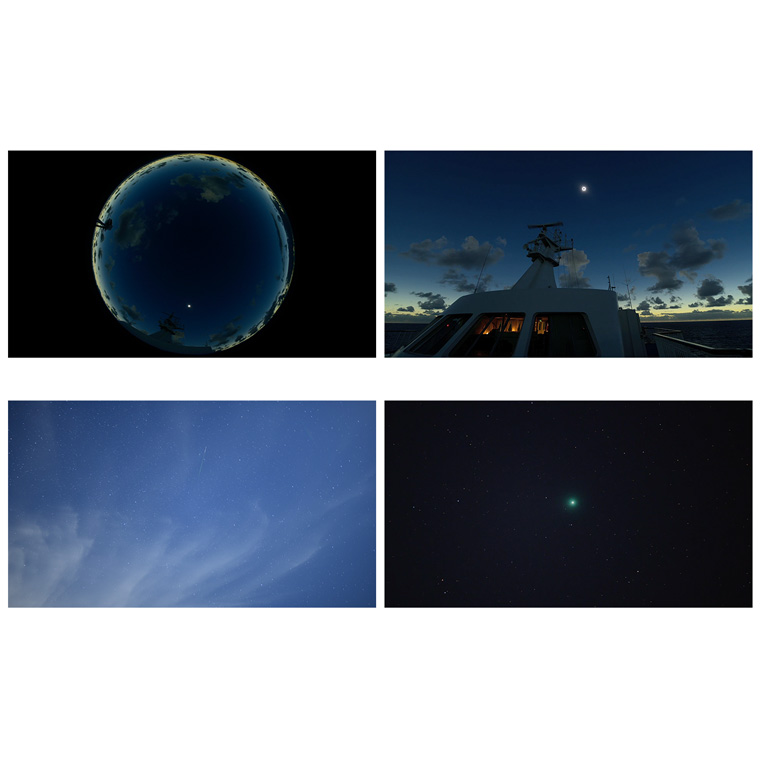
Features of the D850
The D850 not only boasts the interval-timer shooting feature so popular with users
of the D810, but also features a variety of functions for enhanced expressive power
and productivity.
Minimum Time Between Shots: 0.5 s
In interval timer photography, a question that is sometimes of interest is how short
the interval between shots can be. Specifically, this question arises when intervals
as short as a second will nevertheless result in jerky footage. If your only goal
is smooth motion, you can extend the exposure time until it is nearly the same as
the interval, but the individual shots will then lose definition due to motion blur.
In this case, the only option for reducing jerkiness while keeping the exposure time
comparatively short is to reduce the interval between shots, and the D850 lets you
choose intervals as short as half a second (Interval timer shooting only; not available
with Time-lapse movie).
Endurance
Most time-lapse movies
require the interval timer be used for anywhere from a hundred to over a thousand
shots. Battery endurance is consequently an important consideration. Not only does
the D850 improve on the D810’s performance with an endurance of about 1,840
shots when used with an EN‑EN15a battery, but when used with an EN‑EL18b inserted
in an optional MB‑D18 multi-power battery pack, it is capable of up to 5,140 shots,
letting you take large numbers of photos worry-free.
Silent Photography
The repeated use of the shutter and mirror during interval-timer photography
is a concern not only for the noise and vibration it causes but also for the wear
it imposes on the equipment. The D850’s silent photography option eliminates
use of the mechanical shutter during shooting, while the mirror is only raised and
lowered at the start and end of photography. Silent photography is ideal for interval
timer shooting, as it dispels all concerns surrounding noise, vibration, and wear
Although silent photography does in general increase rolling shutter distortion,
this is not a concern during time-lapse photography, which most likely does not feature
subjects that quickly cross the frame.
On-Camera
Batch NEF (RAW) Processing
When starting interval-timer photography,
it is often difficult to predict just how the subject will change during shooting.
Photographers may therefore want to shoot in NEF (RAW) format so that they will have
the greatest possible freedom to alter exposure and white balance after shooting.
On the other hand, processing anywhere from a hundred to over a thousand shots, each
45 megapixels in size, can be a daunting prospect.
This is the problem
that on-camera batch processing of NEF (RAW) images has been introduced to solve.
Depending on the computer’s specs, processing a thousand images using Capture
NX‑D would take about 3 hours (see Note 1), while the same task (see Note 2)
performed using the camera’s batch NEF (RAW) processing option
would take about 25 minutes (see Note 3). Although the processed images must be saved
in JPEG format, the greatly reduced processing time makes this a good choice if you
want to try processing the images in a number of different ways to determine the optimal
result.
Low-Luminance
Metering
If aperture-priority auto, for example,
is combined with silent photography and exposure smoothing
during interval-timer shooting, the D850’s exposure metering system will automatically
adapt to much lower light levels. The night can be dark enough that you can see the
Milky Way, and yet the camera will still be able to meter light at levels so low that
you can capture every star in the sky.
Of course, photographing subjects
that dark requires a fast lens and skillful choice of settings, including the correct
exposure mode and auto ISO sensitivity control, but the ability to take correctly
exposed shots of subjects formerly too dark for auto-exposure greatly expands the
creative possibilities available. The more creative the photographer, the happier
they’ll be.
Needless to say, aperture-priority auto
is an auto-exposure (AE) mode, and can be used not only to photograph the heavens
at night but also subjects that vary greatly in brightness, such as a sunset darkening
to a star-filled sky.
Note 1: Images converted to JPEG (minimum compression,
maximum quality) using Capture NX‑D on a MacBook Pro (OS X version 10.10.5, intel
Core7 2.5 GHz, 16 GB 1600 MHz DDR3 RAM).
Note 2: Converting 14-bit
NEF (RAW) files (lossless compression) to JPEG Fine★, size L.
Note 3: Images
read from a 128 GB SONY SF-G SD memory card and saved to a 128 GB Lexar
Professional 2933× XQD memory card.
Tips and Tricks > Time-Lapse
Movies 2: Settings Selection and Movie Creation
Tips and Tricks > Time-Lapse
Movies 3: New Expressive Possibilities
Profile of YAMANO Yasuteru
Photographer and researcher
of photographic techniques. Born in 1954 in Kagawa. Has been publishing photos and
articles in astronomical journals since the 1970s. Has published many digital photos
and articles relating to digital astronomical photography since the year 2000. Member
of the Society of Photography and Imaging of Japan (SPIJ).


